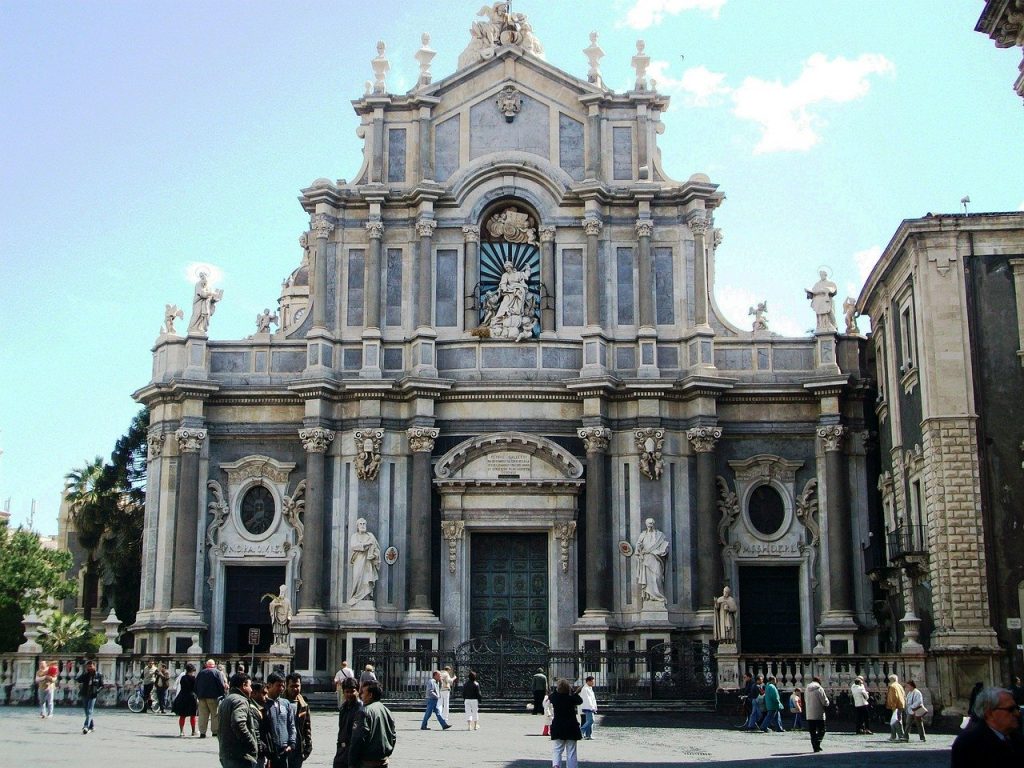Feast of Sant'Agata. Three intense days of worship, passion and folklore. The most important religious festival in the city of Catania. There third most important in the world after the Holy Week in Seville and the Feast of Corpus Christi in Guzco in Peru. A party that tells of the love of the Catania people for the Saint, of the virgin and martyr tortured by Quinziano and of the splendid procession declared Unesco world heritage site.
Feast of Sant'Agata, from 3 to 5 February and 17 August
The festival dedicated to Agata is suggestion, mysticism and religious spectacle. The city of Catania lights up and honors the patron saint. On 3, 4, 5 February and 17 August for the summer celebrations, everything is colored. In February the martyrdom by the Roman proconsul Quinziano. In August, however, the return to Catania of his remains (stolen and brought to Constantinople by the Byzantine general Giorgio Maniace as spoils of war). The 3 February opens with the procession of the offering of the wax, born from the relationship between the devotee and the Saint for the request for a grace or for a grace received. An ancient custom has it that the weight of the candle corresponds to that of the devotee. Subsequently, the highest religious and institutional offices of the city parade along via Etnea, the main street up to the Church of San Biagio in Piazza Stesicoro.

The procession, again, closes with the two carriages of the Senate, with the mayor and other representatives of the Municipality of Catania on board. The conclusion takes place in Piazza Duomo. There evening, on the other hand, is the moment most loved by the people of Catania and tourists. From 20:00, from Piazza Duomo, you can admire the fireworks display, followed by the concert in honor of the Patron Saint. Tradition has it that i fireworks are used to wake up the Saint, so that she can prepare to return to the streets of Catania. The 4th begins with the Mass of the Dawn and the blessing of the Archbishop of Catania. This is the most touching moment. The reliquary bust of the Saint, after a year of waiting, is taken out of the chapel and given to the devotees. The procession begins along an external route of the city which ends with the return to the Cathedral late at night.
February 5th and the internal tour
Il 5 begins with the Pontifical Mass. At 17 pm, after the fires, the reliquary bust is carried in procession throughout the night. The Candlemas (wooden works of art of various sizes and heights and each belonging to a category of trade, neighborhood or association) precede it. The procession, with the devotees who pull the fercolo with ropes, winds along the main street. In this regard, it is good to point out the clothing. The devotees, in fact, wear a white sack. According to tradition, it recalls the nightgown worn on August 17, 1126, when the relics of Sant'Agata returned to Catania.

The other highlights of the day of February 5th they are: the fires of the Borgo; a fireworks display that takes place late at night, in the early hours of February 6th. The climb of Sangiuliano; the fercolo faces a long climb on a lava stone pavement that has large cracks between one slab and another. The suggestive Song of the Benedictine nuns; the nuns sing a song in Latin and offer a floral tribute. Finally, the party ends with the return to the cathedral. On February 12, eight days after the inside tour, the reliquary bust is exposed to give a last farewell to the Saint.

The feast of Sant'Agata is an act of faith, but also a wonder and a way to get to know the traditions of a southern city. For the days of the festivities, real culinary delights are prepared Sicilian cooking. Cassateddi di Sant'Aita e olivette, desserts made with real pasta. The first, also called minnuzze, refer to the breasts torn from the saint during martyrdom. The olivette, on the other hand, refer to an ancient legend. Agata, to escape from Quinziano's men, stopped to rest. Just at that moment an olive tree appeared out of nowhere to shelter and eat. Another interesting aspect of the party is that of 'Ntuppatedde, claim of freedom e female emancipation.





